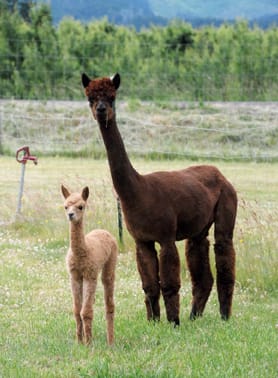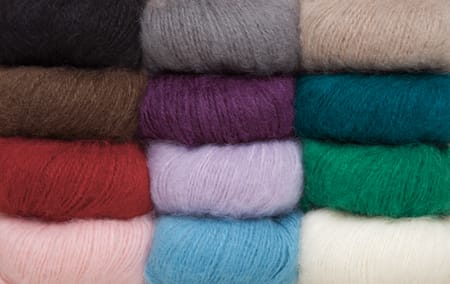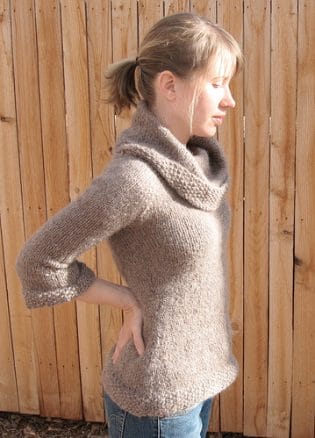Alpacas are known for their cuteness, but they do have a few other tricks up their woolly sleeves! Hailing from South America, Alpacas belong to the camelid family (which also includes camels and llamas) and are known for its fleece that spins into luxurious yarns. In centuries past, the Alpaca was an incredibly valuable animal, even more so than precious gems – although if you ask a knitter or crocheter today, they still might be inclined to agree with that sentiment.
So in honor of Reverie, our newest Alpaca blend yarn, let’s explore the properties of Alpaca and just what exactly makes it so wonderful for us fiber fanatics!
Our newest addition, Reverie!
First and foremost, the fleece of an Alpaca is a protein fiber. Unfortunately, this doesn’t mean knitting with it will make you stronger (though I would prefer logging my knitting as time spent at the gym). However, it does indicate that the fiber comes from an animal – namely, the Alpaca whose fiber is strong, warm, and comfortable. Secondly, since Alpacas originated from the high altitudes of the Andes Mountains, their fiber has a special insulating property to protect them from cold and chilly temperatures. Each fiber is actually hollow, which is what makes it so incredibly lightweight and at the same time, especially warm.

(cute Alpacas from my visit to an Alpaca farm!)
Another factor that makes Alpaca such a popular fiber is that it is soft enough to be worn against the skin. This softness factor is made possible by the way the scales of the Alpaca fibers are arranged. They all lie flat in the same direction, making for a smooth surface. This also adds wonderful drape, but it does take away from the elasticity. Then, it is during the fiber processing when it is evaluated for fineness and sorted into one of several categories based on its micron count. Micron count is a technical measurement determined by studying a sample of Alpaca fleece and calculating the average diameter of the shaft of each fiber. In short – the lower the micron count, the softer the fiber will be.
And now that we know more about the basics of Alpaca fibers, let’s take a closer look at Reverie! This particular yarn is an 80/20 blend of baby Alpaca and acrylic which is brushed to give it an extra-soft, cloud-like texture. We’ve already talked about Alpaca and its unique properties: a hollow core for super warming strength and smooth scales for a soft fiber that drapes well but with somewhat limited elasticity. However, adding a touch of acrylic to the baby Alpaca not only adds a bit of bounce to Reverie, but it also makes an otherwise potentially unyielding yarn a little more forgiving. Reverie’s brushed texture also gives it a mohair-like effect while being super soft to the touch and it also allows it to be knit up at a versatile gauge.
(photo from the Francis Revisted project page)
And now onto the fun part – making stuff! Personally, I am totally digging Reverie for oversized sweaters and pullovers that just embody coziness and comfort. After searching through patterns, I came across a design that has been in my Ravelry queue for a while now. Francis Revisted by Beth Silversein is a free download pattern for a simple pullover with a cozy cowl collar, but no yarn ever really “spoke” to me per say. That is until I had a ball of Reverie in my hot little hands. Over the weekend, I cast on and have already knit into my second ball! I’m using size 10 needles for the sweater which means it is working up rather quickly, but it doesn’t look loosely knit thanks to the brushed texture of the yarn. Both Stacey and Alison are planning out Reverie projects as well, and I can’t wait to see how their projects turn out.
And because I am always cold here at the office, I’m also eyeing Wonder by Marie Wallin and Caravan by Martin Storey as addional projects for Reverie that have that same combination of coziness and comfort that I crave as the seasons change.
What projects are you dreaming up for Reverie?





